#Unity Game Development Offerings
Explore tagged Tumblr posts
Text
Mobiloitte's Visionary Game Development

Explore unparalleled gaming experiences with Mobiloitte, South Africa's foremost gaming platform development company. As pioneers in game development, we bring your vision to life with innovative solutions. From concept to launch, our expertise ensures captivating gaming experiences. Trust Mobiloitte, the top gaming development company, to redefine the future of interactive entertainment. Your journey to a superior gaming platform begins with us.
#Unity Game Development Company#Unity Game Development Services#Unity Develop Game for Popular Platforms#Unity Game Development#Unity Game Development Solutions#Unity Game Development Methodologies#Unity Game Development Offerings#Game Development Company#game development company South Africa#game development studio South Africa#mobile game development South Africa#video game development South Africa
0 notes
Text
So, let me try and put everything together here, because I really do think it needs to be talked about.
Today, Unity announced that it intends to apply a fee to use its software. Then it got worse.
For those not in the know, Unity is the most popular free to use video game development tool, offering a basic version for individuals who want to learn how to create games or create independently alongside paid versions for corporations or people who want more features. It's decent enough at this job, has issues but for the price point I can't complain, and is the idea entry point into creating in this medium, it's a very important piece of software.
But speaking of tools, the CEO is a massive one. When he was the COO of EA, he advocated for using, what out and out sounds like emotional manipulation to coerce players into microtransactions.
"A consumer gets engaged in a property, they might spend 10, 20, 30, 50 hours on the game and then when they're deep into the game they're well invested in it. We're not gouging, but we're charging and at that point in time the commitment can be pretty high."
He also called game developers who don't discuss monetization early in the planning stages of development, quote, "fucking idiots".
So that sets the stage for what might be one of the most bald-faced greediest moves I've seen from a corporation in a minute. Most at least have the sense of self-preservation to hide it.
A few hours ago, Unity posted this announcement on the official blog.
Effective January 1, 2024, we will introduce a new Unity Runtime Fee that’s based on game installs. We will also add cloud-based asset storage, Unity DevOps tools, and AI at runtime at no extra cost to Unity subscription plans this November. We are introducing a Unity Runtime Fee that is based upon each time a qualifying game is downloaded by an end user. We chose this because each time a game is downloaded, the Unity Runtime is also installed. Also we believe that an initial install-based fee allows creators to keep the ongoing financial gains from player engagement, unlike a revenue share.
Now there are a few red flags to note in this pitch immediately.
Unity is planning on charging a fee on all games which use its engine.
This is a flat fee per number of installs.
They are using an always online runtime function to determine whether a game is downloaded.
There is just so many things wrong with this that it's hard to know where to start, not helped by this FAQ which doubled down on a lot of the major issues people had.
I guess let's start with what people noticed first. Because it's using a system baked into the software itself, Unity would not be differentiating between a "purchase" and a "download". If someone uninstalls and reinstalls a game, that's two downloads. If someone gets a new computer or a new console and downloads a game already purchased from their account, that's two download. If someone pirates the game, the studio will be asked to pay for that download.
Q: How are you going to collect installs? A: We leverage our own proprietary data model. We believe it gives an accurate determination of the number of times the runtime is distributed for a given project. Q: Is software made in unity going to be calling home to unity whenever it's ran, even for enterprice licenses? A: We use a composite model for counting runtime installs that collects data from numerous sources. The Unity Runtime Fee will use data in compliance with GDPR and CCPA. The data being requested is aggregated and is being used for billing purposes. Q: If a user reinstalls/redownloads a game / changes their hardware, will that count as multiple installs? A: Yes. The creator will need to pay for all future installs. The reason is that Unity doesn’t receive end-player information, just aggregate data. Q: What's going to stop us being charged for pirated copies of our games? A: We do already have fraud detection practices in our Ads technology which is solving a similar problem, so we will leverage that know-how as a starting point. We recognize that users will have concerns about this and we will make available a process for them to submit their concerns to our fraud compliance team.
This is potentially related to a new system that will require Unity Personal developers to go online at least once every three days.
Starting in November, Unity Personal users will get a new sign-in and online user experience. Users will need to be signed into the Hub with their Unity ID and connect to the internet to use Unity. If the internet connection is lost, users can continue using Unity for up to 3 days while offline. More details to come, when this change takes effect.
It's unclear whether this requirement will be attached to any and all Unity games, though it would explain how they're theoretically able to track "the number of installs", and why the methodology for tracking these installs is so shit, as we'll discuss later.
Unity claims that it will only leverage this fee to games which surpass a certain threshold of downloads and yearly revenue.
Only games that meet the following thresholds qualify for the Unity Runtime Fee: Unity Personal and Unity Plus: Those that have made $200,000 USD or more in the last 12 months AND have at least 200,000 lifetime game installs. Unity Pro and Unity Enterprise: Those that have made $1,000,000 USD or more in the last 12 months AND have at least 1,000,000 lifetime game installs.
They don't say how they're going to collect information on a game's revenue, likely this is just to say that they're only interested in squeezing larger products (games like Genshin Impact and Honkai: Star Rail, Fate Grand Order, Among Us, and Fall Guys) and not every 2 dollar puzzle platformer that drops on Steam. But also, these larger products have the easiest time porting off of Unity and the most incentives to, meaning realistically those heaviest impacted are going to be the ones who just barely meet this threshold, most of them indie developers.
Aggro Crab Games, one of the first to properly break this story, points out that systems like the Xbox Game Pass, which is already pretty predatory towards smaller developers, will quickly inflate their "lifetime game installs" meaning even skimming the threshold of that 200k revenue, will be asked to pay a fee per install, not a percentage on said revenue.
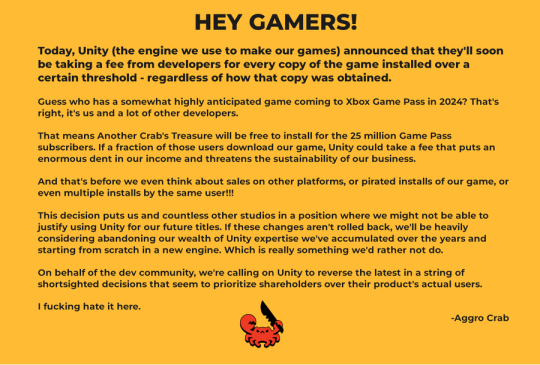
[IMAGE DESCRIPTION: Hey Gamers!
Today, Unity (the engine we use to make our games) announced that they'll soon be taking a fee from developers for every copy of the game installed over a certain threshold - regardless of how that copy was obtained.
Guess who has a somewhat highly anticipated game coming to Xbox Game Pass in 2024? That's right, it's us and a lot of other developers.
That means Another Crab's Treasure will be free to install for the 25 million Game Pass subscribers. If a fraction of those users download our game, Unity could take a fee that puts an enormous dent in our income and threatens the sustainability of our business.
And that's before we even think about sales on other platforms, or pirated installs of our game, or even multiple installs by the same user!!!
This decision puts us and countless other studios in a position where we might not be able to justify using Unity for our future titles. If these changes aren't rolled back, we'll be heavily considering abandoning our wealth of Unity expertise we've accumulated over the years and starting from scratch in a new engine. Which is really something we'd rather not do.
On behalf of the dev community, we're calling on Unity to reverse the latest in a string of shortsighted decisions that seem to prioritize shareholders over their product's actual users.
I fucking hate it here.
-Aggro Crab - END DESCRIPTION]
That fee, by the way, is a flat fee. Not a percentage, not a royalty. This means that any games made in Unity expecting any kind of success are heavily incentivized to cost as much as possible.

[IMAGE DESCRIPTION: A table listing the various fees by number of Installs over the Install Threshold vs. version of Unity used, ranging from $0.01 to $0.20 per install. END DESCRIPTION]
Basic elementary school math tells us that if a game comes out for $1.99, they will be paying, at maximum, 10% of their revenue to Unity, whereas jacking the price up to $59.99 lowers that percentage to something closer to 0.3%. Obviously any company, especially any company in financial desperation, which a sudden anchor on all your revenue is going to create, is going to choose the latter.
Furthermore, and following the trend of "fuck anyone who doesn't ask for money", Unity helpfully defines what an install is on their main site.
While I'm looking at this page as it exists now, it currently says
The installation and initialization of a game or app on an end user’s device as well as distribution via streaming is considered an “install.” Games or apps with substantially similar content may be counted as one project, with installs then aggregated to calculate the Unity Runtime Fee.
However, I saw a screenshot saying something different, and utilizing the Wayback Machine we can see that this phrasing was changed at some point in the few hours since this announcement went up. Instead, it reads:
The installation and initialization of a game or app on an end user’s device as well as distribution via streaming or web browser is considered an “install.” Games or apps with substantially similar content may be counted as one project, with installs then aggregated to calculate the Unity Runtime Fee.
Screenshot for posterity:

That would mean web browser games made in Unity would count towards this install threshold. You could legitimately drive the count up simply by continuously refreshing the page. The FAQ, again, doubles down.
Q: Does this affect WebGL and streamed games? A: Games on all platforms are eligible for the fee but will only incur costs if both the install and revenue thresholds are crossed. Installs - which involves initialization of the runtime on a client device - are counted on all platforms the same way (WebGL and streaming included).
And, what I personally consider to be the most suspect claim in this entire debacle, they claim that "lifetime installs" includes installs prior to this change going into effect.
Will this fee apply to games using Unity Runtime that are already on the market on January 1, 2024? Yes, the fee applies to eligible games currently in market that continue to distribute the runtime. We look at a game's lifetime installs to determine eligibility for the runtime fee. Then we bill the runtime fee based on all new installs that occur after January 1, 2024.
Again, again, doubled down in the FAQ.
Q: Are these fees going to apply to games which have been out for years already? If you met the threshold 2 years ago, you'll start owing for any installs monthly from January, no? (in theory). It says they'll use previous installs to determine threshold eligibility & then you'll start owing them for the new ones. A: Yes, assuming the game is eligible and distributing the Unity Runtime then runtime fees will apply. We look at a game's lifetime installs to determine eligibility for the runtime fee. Then we bill the runtime fee based on all new installs that occur after January 1, 2024.
That would involve billing companies for using their software before telling them of the existence of a bill. Holding their actions to a contract that they performed before the contract existed!
Okay. I think that's everything. So far.
There is one thing that I want to mention before ending this post, unfortunately it's a little conspiratorial, but it's so hard to believe that anyone genuinely thought this was a good idea that it's stuck in my brain as a significant possibility.
A few days ago it was reported that Unity's CEO sold 2,000 shares of his own company.
On September 6, 2023, John Riccitiello, President and CEO of Unity Software Inc (NYSE:U), sold 2,000 shares of the company. This move is part of a larger trend for the insider, who over the past year has sold a total of 50,610 shares and purchased none.
I would not be surprised if this decision gets reversed tomorrow, that it was literally only made for the CEO to short his own goddamn company, because I would sooner believe that this whole thing is some idiotic attempt at committing fraud than a real monetization strategy, even knowing how unfathomably greedy these people can be.
So, with all that said, what do we do now?
Well, in all likelihood you won't need to do anything. As I said, some of the biggest names in the industry would be directly affected by this change, and you can bet your bottom dollar that they're not just going to take it lying down. After all, the only way to stop a greedy CEO is with a greedier CEO, right?
(I fucking hate it here.)
And that's not mentioning the indie devs who are already talking about abandoning the engine.
[Links display tweets from the lead developer of Among Us saying it'd be less costly to hire people to move the game off of Unity and Cult of the Lamb's official twitter saying the game won't be available after January 1st in response to the news.]
That being said, I'm still shaken by all this. The fact that Unity is openly willing to go back and punish its developers for ever having used the engine in the past makes me question my relationship to it.
The news has given rise to the visibility of free, open source alternative Godot, which, if you're interested, is likely a better option than Unity at this point. Mostly, though, I just hope we can get out of this whole, fucking, environment where creatives are treated as an endless mill of free profits that's going to be continuously ratcheted up and up to drive unsustainable infinite corporate growth that our entire economy is based on for some fuckin reason.
Anyways, that's that, I find having these big posts that break everything down to be helpful.
#Unity#Unity3D#Video Games#Game Development#Game Developers#fuckshit#I don't know what to tag news like this
6K notes
·
View notes
Note
Tell us more about this Escape ending AU that you are completely normal about.
WELL, if you're asking

(i first received this ask in 28th of JUNE, but waited for my uni break so i could be as self-indulgent as possible)
the Escape AU is first and foremost my obsession with (1) epilogue-type stories as a way to deal with the conseguences of a plot (which is especially promising with funger's trauma bonanza) and (2) domestic gay people (which is ALSO especially promising with funger's trauma bonanza). i also like when the domestic couple are kind of freaks.
the background for the AU is mostly based with my number of playthroughs with the game, in particular that as soon as i had the girl and knew what exactly her ending was, i would go after literally any other ending just so she could live.
to say the summary of the dungeon-canon, ragnvaldr goes in the dungeon after le'garde to kill him and enki goes into the dungeon after the ritual of ascension, and they just join forces for survival; the girl only comes after, and because ragnvalr is partly in this whole quest because his child was murdered, he becomes somewhat protective of the girl, and then of enki, to the point of doubt about when does this affection and desire to protect is for them on their own, and when it's just comes as a second hand for the family ragnvaldr's lost. enki isn't arsed with any of it at first, but as a feral cat gaining the literal first modicum of care in its life, he starts to become less sure of how far he'd gone to obtain success when it puts this other people at risk, even without understanding (or accepting) any of it. and the girl is, verbatim, "unused to kindness of any kind" - she literally deserves the world.
the ending E, as exactly "underwhelming" as it is, is a reflection of this sense of care the characters develop: it doesn't matter what the dungeon does offer (and what really the characters do achieve in it; i personally like the idea of them facing Le'garde as the Yellow King in the dungeon, for the pathos of it all). the most important thing after the conga line of misery that funger is, is that for people that at that point had no reason to live, they suddenly get one. for it, they leave behind the dungeon and the promises within.
i still like to think that this sort of decision is not without unrest - i don't think enki would do well as a house wife, and this tension of "did i make a good choice? is this really what i want?" is interesting. i also thing ragvaldr has a little parasocial thing going because of his previous family, and i also think that idea is interesting.
as always, i like to see characters go through the ringer and then try to build a happy ending (or as happy as it can be) out of it. i feel that's a sort o theme anyone can find comfort in. and yes, i do like thinking of the funniest possible nuclear family unity Oldegård would ever see (pair of parents + one kid + a dog). (and i do like thinking about rag and enki doing it nasty. who said that.)
thank you for the ask and literally anyone who has the minimum interest about my brainworms… i loved thinking about them to write this. it also made me draw again (miraculous), so here's a little something.
first leaving the dungeons.

#asks#do i officially have an ask tag? kyaaaaaa#escape au#there i made a tag for it. will add to the rest a posteriori#fear and hunger#funger#enkivaldr#rabisco
110 notes
·
View notes
Text
Hallownest Symbols, the Ancient Civilization, and the Pale King
Sooo. Since I made my post on Hallownest symbols I've had some new insights.

The Hallownest symbol, with its lined oval and three sets of wings, predates the kingdom as it was under the Pale King and White Lady. It can be found on arcane eggs.
Lemm, on arcane eggs: This civilisation may claim itself the first, but something else did exist within this place before Hallownest. Each egg offers a narrow glimpse into that forgotten age.
It's not just the arcane eggs though. The symbol can also be found in the Abyss, on the lighthouse. Sorta.
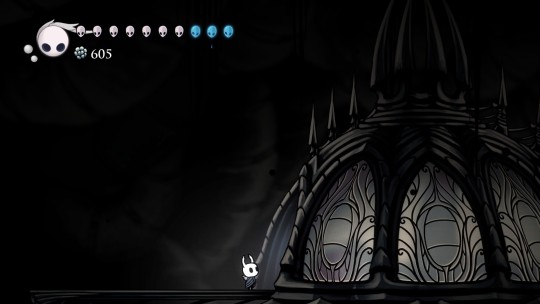
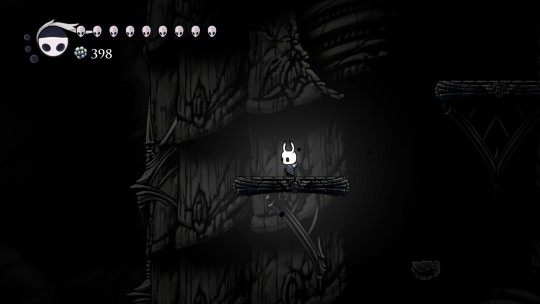
You see, the lighthouse isn't just one structure--it's two. It's an older, crumbling structure....and then the new shiny construction that the Pale King added on top.
And looking at the older structure, the platforms themselves have the Hallownest symbol on it. Oval with wings.
Another detail I've noticed in the Abyss is that this structure isn't the only one. It can be seen in the background around the void sea:
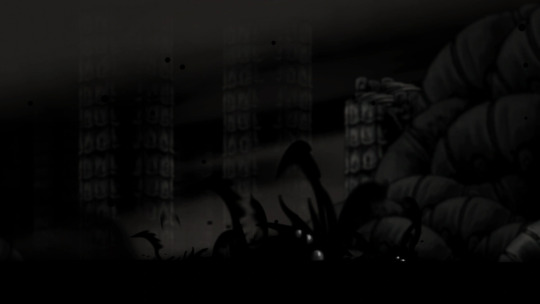
Just, further cementing the thought that the old crumbling building beneath the shiny new top is not a construction under the Pale King, but instead something quite ancient. Just one of many buildings, a conveniently tall structure for the Pale King to repurpose into a lighthouse.
So what does this mean?
Various sources in the game point to the Pale King having portrayed himself as the creator of Hallownest. Lemm, in his quote above. And some more examples:
Lore tablet in King's Pass: Higher beings, these words are for you alone. Beyond this point you enter the land of King and Creator. Step across this threshold and obey our laws. Bear witness to the last and only civilisation, the eternal Kingdom. Hallownest
Hunter's Journal, on wingmoulds: The bugs of Hallownest believed that their King created this world and everything in it. For what purpose, I wonder? Were his subjects companions, or toys, or children? Such a mind seems unknowable.
The developer notes in the game also indicate that the Pale King wanted to get rid of other gods:
The moth tribe were (perhaps) descended from Radiance. However, the King convinced them somehow to seal Radiance away. I guess so he could rule Hallownest with his singular vision, as a monarch/god with no other gods.
The dev notes are not canon and it's clear that they were never intended to be seen by others. But I think there's something to be said at least for him attempting a "singular vision". Uniting Hallownest under one rule, portraying himself as creator, creating a certain order. Some more quotes:
Bardoon: For quiet retreat did I climb up here, away from spitting creatures. Ormmph... Yes. High up. Away from simple minds, lost to light. Theirs is a different kind of unity. Rejection of the Wyrm's attempt at order.
Mask Maker, reacting to Ghost having King's Brand: No bug has ever laid claim to this whole. Even the beasts knew their limits and bound their realm at Nest's edge. It is the ancient caste that made attempt at such vast rule. Hallownest's ruin reflects well those fared attempts.
I believe Mask Maker is referring to the Ancient Civilization having attempted to rule over all of Hallownest. There's a possibility they're referring to Hallownest under the Pale King, as "ancient" does not necessarily mean what fans call the Ancient Civilization (and indeed most instances of the word "ancient" refer to Hallownest under the Pale King). But "attempts" being in the plural, I think Mask Maker intends to draw a parallel here between the two civilizations.
Speaking of King's Brand...

I believe now this is the best symbol of the Pale King we have. His original symbol.
As I noted in my first post on Hallownest symbols, the Hallownest seal seems the most associated with the Pale King when it has the crown on it. And the few actual depictions of him, in statues, idols, and shrines, all have his crown, but lack wings. Save for the glowing silhouette of him in Ogrim's dream battle, there are no depictions of him with wings. He may lack wings entirely, or have some form of artificial wings.
In fact, I find it quite interesting how you can pick up monarch wings as an item.
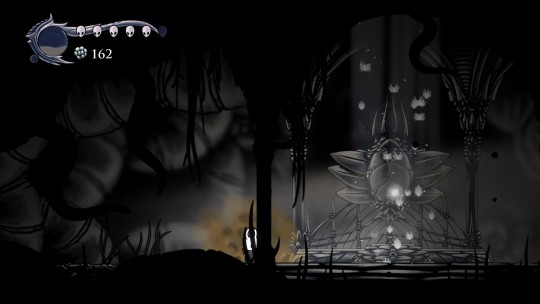
They are described by the game as being made of "ethereal matter". The game manual calls them "wings of a monarchfly". It's possible that the Pale King had such wings as seen here, not part of his original body, but made somehow.
And, just to look at the symbols again...



If one were to superimpose the old Hallownest Seal from the time of the Ancient Civilization on top of the King's Brand, you'd get the current Hallownest Seal. Oval Bug body, wings, crown, and tail.
So, what I'm thinking, the impression that I'm getting....
The Pale King came to Hallownest. He saw all the evidence of the Ancient Civilization, which had already fallen. He took on bug form (which may have happened before or after he saw the symbol and other evidence of the ancient civ, but I have to wonder if witnessing Hallownest's history and symbols influenced even this decision to become small). He, for reasons beyond the purpose of this post, decided he wanted to rule Hallownest as king and "creator" (which again may or may not have been part of his decision to be reborn).
He established his kingdom. He took on aspects of preexisting Hallownest, essentially claiming the legacy of the Ancient Civilization as his own. He took on bug form, and gave himself wings, to match this old image, as if it was always about him.
He established his palace in the Ancient Basin. He had access to the Abyss, mostly closed off from the rest of the populace. He studied the void. But the bugs of the Ancient Civilization had a different attitude about void, as indicated by Lemm in the Hunter's Journal entry on the void idol:
Inspired or mad, those ancient bugs. They devoted their worship to no lord, or power, or strength, but to the very darkness itself.
The Pale King instead was worshipped as a god by his people. He instead treated the void as something to control. He studied it. He tested it. He created void constructs to guard his palace. He used it, to stake the future of his entire kingdom on.
I could go on and on about this. And I intend to. But this is as far as I will go in this post, meant to be an update to my last post on symbols. But, I already have a long post I put together months ago, didn't post, and just have to update with new thoughts. So hopefully, I'll be expanding on all the implications here for Hallownest history soon enough.
751 notes
·
View notes
Text
We have been Betrayed, Backstabbed, Bamboozled: The Future of Elysian Eclipse
So, if you are active on our Discord, you know that EE is made in the Unity Engine and the CEO just decided to massively fuck over all the devs who are using it...
Callum Upton made a great video explaining the situation:
youtube
But it gets even worse!
Unity since defended themselves, saying that these fees are only affecting 10% of their customers, because of the $200k and $1m thresholds, so Indie devs don't have to worry about that.
…which isn't true:
Unity Plus
They aren't only introducing these fees but also changed the regular pricing plans! They just removed "Unity Plus" which is the lowest tier and costs about $50/month per dev with taxes. This is what most indies use. The next higher tier costs QUADROUPLE that amount and is also required to remove the universally loathed "made with Unity" splash screen. Oh! And if you have the personal tier, you won't be able to use Unity offline anymore! It now needs to do a license check every 3 days to function!
Unity's Ad Service
The fees will hit devs that do free-to-play mobile stuff especially hard, since they still have to pay the fees even when the players don't buy anything, meaning they could end up owing Unity more than they make in income. But what's this? If you use Unity's advertising service for your game, you will get a discount on the fees! The majority of mobile games run on Unity, meaning they are trying to monopolize the mobile ad market with this!
Publishers
Elysian Eclipse has caught the interest of a really big studio and publisher, who is considering to handle the marketing and publishing for the game. They are obviously planning to make the game come out big with sales, going beyond Unity's thresholds. But since the game is made in Unity, they probably now have to reconsider that carefully, since that would cause a massive amount of fees with Unity's new pricing model. So any game using Unity is now an instant turn-off for publishers, also massively hurting indie devs who don't reach that income threshold yet.
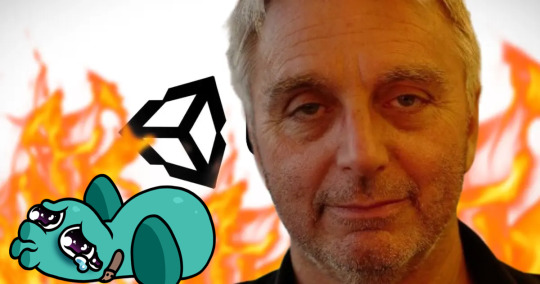
What will happen now?
So, Unity can't be trusted anymore and should be seen as a major threat to us and the gaming industry. Even if they walk back on some of these decisions, what has been said, has been said. They showed that they don't care about destroying thousands of games, as long as it nets them profit, so who knows what they are going to do next?
I will pause the development of Elysian Eclipse and release the Patreon demo, including all the prototypes like Aquatic Stage for free today. I canceled my subscription and it will run out next year, so Unity isn't getting a single cent from my games anymore.
Unreal Eclipse?
In the meantime I'll focus on improving my C++ skills, so I can work more effectively in Unreal Engine 5. Unreal is the current industry leader, offering much better solutions for graphics and performance for 3D games. It is also partially open source and completely free until you reach $1 million in revenue.
It is unlikely that I will be able to just translate the game from C# to C++ and port it over, since it is using a lot of engine-specific features. This basically means, we will start from scratch... I can't tell yet how much work this will be or in what ways the game will change.
But one thing, you can always be certain of: I will NEVER BETRAY MY DREAM. I will finish this project, no matter who or what stands in my way. I hope you will continue to support me on this journey.
That being said,
FUCK JOHN RICCITIELLO!!
Fucking cunt.
333 notes
·
View notes
Text
My hope for this post is to impart some hope. I’ve been making this stuff for a very long time. There is a large world of alternatives out there, many of them deserving a lot more attention. Each offer their own vibrant communities, support, philosophies, and mentalities surrounding making a game.
With the recent Unity news... whether they walk it back or not, they've made it clear they can't be trusted. Nathalie Lawhead, digital artist, video game developer, and game blogger, put together a reflection on this move, the way it follows a similar trajectory as the death of Flash.
And they have a truly impressive list, with descriptions, explanations, and uses, of other game engines and game-making software. Many of them are independent or open-source. If you are a game developer or interested in game development, it's a great resource to think about in the wake of Unity tanking itself.
247 notes
·
View notes
Text
the only megacorp likely to pushback on unity charging the installation fee is microsoft because developers are paid to let their games be hosted on gamepass (or be exclusive, even) and to compensate for no xbox revenue MS usually gives a healthy chunk in return. however, that money usually goes towards funding the game being made at all. if their game is a game pass exclusive then they do not get revenue from sales at all, but would presumably still be charged by unity for every installation on an Xbox or pc; gamepass has around 25 million subscribers. if unity follows through on this, Microsoft is gonna have to shell out a LOT more to developers to make their offers seem lucrative. companies like MiHoYo are more likely to shrug it off and pay the fee, because they make bank and this will ultimately not impact their revenue because they're sustained by gacha whales. (mhy is also an investor in the Chinese unity counterpart, for what it's worth)
in general, there's a huge misconception with how money in games works. indie games rarely break even when considering the investments made, because they tend to have recoup that demands revenue from the game sales making up for the money invested to pay the development teams. the hope is that games eventually make enough revenue to pay back the recoup and then go towards helping sustain the team. game studios RARELY make enough money to sustain themselves from sales alone-- most indies are afloat on a pitch-by-pitch basis, with a few viral exceptions that afford studios time to breathe and maintain their releases without immediately scrambling to get the next game pitched and funded.
anyway, this supposedly goes into effect on January 1st 2024. there's time for it to be rolled back, but knowing unity's habits, even though they've hit rock bottom I have a feeling they brought a drill with em
79 notes
·
View notes
Text
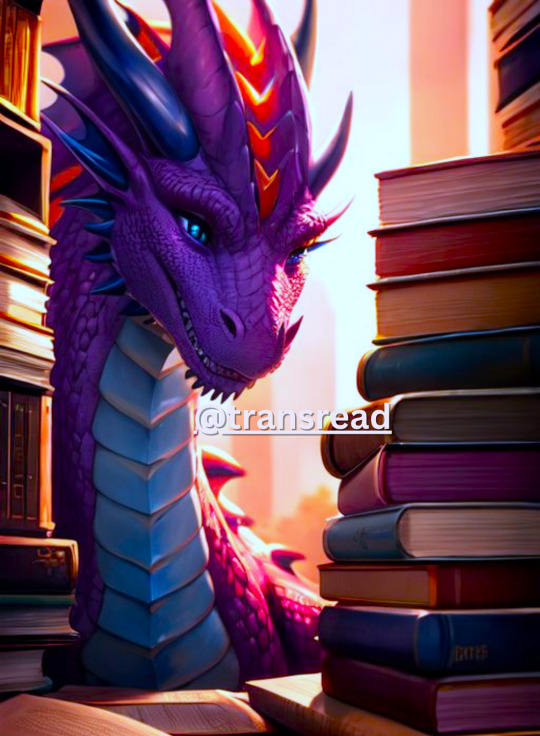
Review of Games of Trans: Rise of the Chosen by Eleanor Everly Rosewood
Games of Trans: Rise of the Chosen by Eleanor Everly Rosewood is a powerful, emotional journey that will stay with you long after the final page is turned. From its rich world-building to its complex, deeply human characters, this book is an unforgettable exploration of courage, identity, and the strength found in unity.
The protagonist, Elara, is a remarkable character whose story is filled with vulnerability, growth, and resilience. As the young heir to the kingdom of Transalia, Elara faces an immense challenge—one that will shape not only their destiny but the fate of their realm. The dark forces of the Shadowblade threaten to consume everything in their path, forcing Elara to confront their deepest fears and embrace their true potential. It’s a journey of self-discovery, political intrigue, and mythical powers, with Elara being drawn into an ancient connection with dragons that marks them as the Chosen, capable of uniting Transalia under a banner of reform and liberation.
What makes this novel stand out is its ability to balance grand fantasy elements with intimate explorations of the human spirit. The writing is breathtakingly beautiful, capturing the urgency of Elara’s journey while also delving into the emotional landscape of the characters. The themes of leadership, unity, and the power of connection are intricately woven throughout the story, creating a tapestry that resonates deeply with readers. Rosewood’s masterful use of language evokes both the triumphs and heartaches of the characters, making each victory and setback feel profoundly real.
One of the most striking aspects of Games of Trans is its portrayal of vulnerability and courage. Elara’s journey is not easy, and yet their determination to rise above adversity, embrace their true self, and fight for the future of their people is nothing short of inspiring. The emotional depth of the story is extraordinary, and readers will be moved by Elara’s vulnerability, strength, and the courage it takes to face not only external enemies but the internal struggles that come with self-acceptance. This is a book that will make you shed tears, laugh, and find hope in even the darkest moments.
The supporting characters are equally well-developed, each with their own unique struggles and strengths. Their relationships with Elara add layers of complexity and heart to the story, highlighting the power of connection and the importance of solidarity in the face of adversity. Whether through moments of humor, love, or shared sorrow, these characters bring depth and richness to the narrative.
Games of Trans is a novel that challenges readers to reflect on their own journey of self-discovery and to find strength in unity. It’s a story about embracing one's true identity, rising above darkness, and fighting for a better future—both for oneself and for the world around them. Whether you are a fan of epic fantasy or looking for a story that celebrates resilience and empowerment, this book offers something for everyone.
Overall, Games of Trans: Rise of the Chosen is an extraordinary tale of transformation, bravery, and the power of love and hope. It’s a story that will stay with you, inspiring you to be your best self, no matter the obstacles. Eleanor Everly Rosewood has created a masterpiece that is as emotionally resonant as it is adventurous, and I highly recommend it to anyone looking for a powerful and deeply moving read.
Rating: 5/5 stars
Recommendation: If you’re looking for a story that combines epic fantasy with heartfelt themes of identity, empowerment, and unity, Games of Trans: Rise of the Chosen is a must-read. This is a book that will challenge you, move you to tears, and inspire you to embrace your true self. Perfect for fans of fantasy and those seeking a tale of courage, love, and transformation.
Amazon.com: Games of Trans: Rise of the Chosen eBook : Everly Rosewood, Eleanor: Kindle Store
9 notes
·
View notes
Note
Hello! So, I heard you are using Gamemaker to make your newest project 'Wishmaker'
Did you watch tutorials from YouTube to learn the language or was it not so different from RPGmaker's language?
if you watched tutorials, could you please answer this with the links? I want to get into programming and making games so it comes in handy!
please and thank you!
Hello, I'm sorry, you must be confused!!
I am actually still using RPGMaker to develop WISHMAKER, even if doesn't quite look like it!
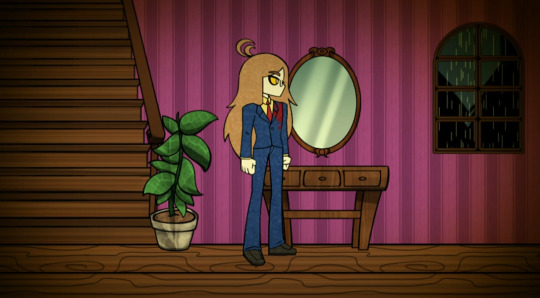
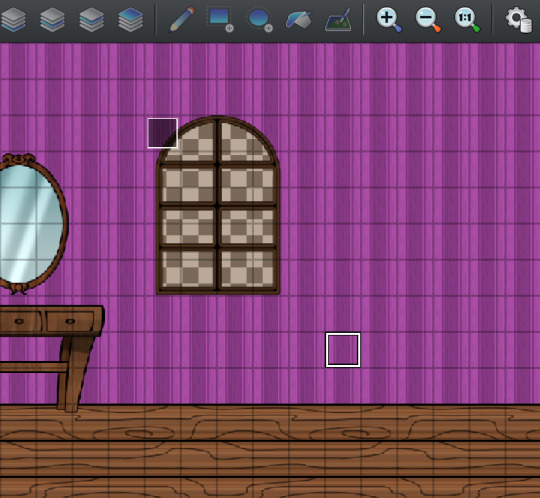
I did briefly experiment with other engines after I decided to switch from the Unity engine, but I actually never touched GameMaker--so I have nothing to offer you! So sorry!
28 notes
·
View notes
Text
Trope chats: the core trio

The "core trio" is one of the most recognizable and enduring character group dynamics in fiction, frequently seen across genres ranging from fantasy and science fiction to coming-of-age stories and adventure novels. This trope revolves around three characters who form a central team, often embodying complementary skills, personalities, and perspectives. The core trio offers a flexible structure for storytelling, allowing for a balance of conflict, cooperation, and character development. It also serves as a microcosm of social dynamics, symbolizing friendship, diversity of thought, and the idea that different strengths are necessary to achieve common goals. However, the trope also comes with narrative risks, such as predictability, over-reliance on established archetypes, and the potential for underdeveloping one or more characters.
This essay will explore the core trio trope as a literary device, examine its common pitfalls, delve into its societal influence, and outline the typical archetypes that tend to form this dynamic.
The primary strength of the core trio lies in its ability to create balance within a narrative. By distributing different traits and abilities among the three characters, the trio often becomes stronger as a unit than as individuals. For example, in J.K. Rowling's Harry Potter series, the trio of Harry, Hermione, and Ron exemplifies this dynamic. Harry is brave but often impulsive, Hermione is the intellectual and planner, while Ron provides emotional support and loyalty. Their different strengths are essential to overcoming the challenges they face, and the trio dynamic allows for varied interactions and conflicts that drive the plot forward.
In terms of storytelling, this balance provides flexibility. Each character in the trio can take turns leading, depending on the situation. For example, Hermione's intelligence saves the group in academic or puzzle-based challenges, while Harry's bravery leads them through dangerous confrontations. Ron’s emotional insight often helps resolve interpersonal tensions or find the human element in complex situations. This variety prevents the narrative from becoming monotonous or overly reliant on a single protagonist, enriching both plot progression and character development.
Furthermore, the trio allows for a more layered exploration of themes, as the characters can embody different facets of a central idea or thematic question. In The Hunger Games, the core trio of Katniss, Peeta, and Gale explores themes of survival, sacrifice, and resistance, with each character offering a different perspective on how to navigate the dystopian world they inhabit. Katniss represents a pragmatic, survival-oriented outlook; Peeta brings empathy and a moral compass; Gale embodies a more revolutionary, aggressive approach. The tension and interaction between these perspectives create depth and complexity in the narrative's exploration of rebellion and justice.
Another major use of the core trio trope is that it serves as a microcosm for social groups or even society as a whole. The diversity within the trio often represents a broader spectrum of human experience, allowing authors to explore questions about unity, difference, and teamwork. Trilogies like J.R.R. Tolkien’s The Lord of the Rings and Rick Riordan’s Percy Jackson series use their core trios to symbolize the idea that collective strength arises from diversity—whether it's diversity of thought, background, or capability.
In many instances, the trio dynamic underscores the idea that no one individual can succeed alone, highlighting the importance of collaboration and interdependence. This is a particularly valuable theme in genres such as fantasy or science fiction, where the trio often faces larger-than-life challenges. In such stories, the unity of the trio becomes a metaphor for societal cooperation, with the group’s success symbolizing how different kinds of people, ideas, or skills are needed to face complex or insurmountable odds.
The core trio often draws from a set of common archetypes, which serve to maximize the contrast between the characters’ personalities and roles. While these archetypes vary depending on the genre, certain patterns recur in many of the most iconic trios. Below are some of the most frequent archetypes found within core trios.
The leader or hero archetype typically holds the spotlight and is central to the story's main conflict or journey. This character is often the most proactive, tasked with making the major decisions, and carries the weight of responsibility for the group. Examples include Harry Potter (Harry Potter), Frodo Baggins (The Lord of the Rings), and Katniss Everdeen (The Hunger Games).
The hero tends to be morally complex or flawed in some way, as this helps humanize their character. Harry struggles with feelings of inadequacy and destiny, Frodo is weighed down by the burden of the One Ring, and Katniss wrestles with her role as a symbol of rebellion. While they are the focal point of their respective narratives, they often rely on the support of their companions to navigate the emotional and physical challenges they face.
The intellectual or strategist is the problem solver of the trio, typically using logic, reason, and knowledge to overcome obstacles. This character’s main role is to think ahead, analyze situations, and provide the brains behind the trio’s operations. Hermione Granger (Harry Potter) and Annabeth Chase (Percy Jackson) are archetypal examples of this type. Both characters are known for their intelligence and resourcefulness, often formulating plans that keep their companions out of danger.
The intellectual can also be more emotionally detached or socially awkward, often contrasting with the more action-oriented or emotionally-driven members of the trio. This dynamic creates tension but also emphasizes the value of diverse approaches to problem-solving, reinforcing the theme of collaboration.
The third archetype typically fulfills the role of "the heart" or the emotional anchor of the group. This character offers loyalty, emotional support, and a grounding force to balance out the more extreme traits of the leader and the intellectual. Ron Weasley (Harry Potter), Samwise Gamgee (The Lord of the Rings), and Simon Lewis (The Mortal Instruments) all serve as emotional anchors in their respective trios.
This character also often provides comic relief, softening the tension in difficult situations. Though they may initially seem less crucial to the group’s success, their emotional resilience and loyalty often become central in moments of crisis, demonstrating that heart and emotional intelligence are just as important as bravery or intellect.
These archetypes—leader, intellectual, and heart—allow for a complementary distribution of skills and personality traits, creating narrative balance and giving each character distinct strengths. While these archetypes are common, effective trios typically subvert or deepen them over time, adding complexity to the relationships and individual arcs.
One of the major pitfalls of the core trio trope is predictability. Because this structure is so prevalent in fiction, audiences may come to expect certain roles and dynamics within a trio, which can lead to a lack of narrative tension or surprise. For example, if readers know that one member of the trio is the "leader" and another is the "heart," they may anticipate the ways in which these characters will interact or solve problems, diminishing the emotional impact of the story.
Additionally, trios can sometimes fall into the trap of stereotyping, especially when archetypes are rigidly adhered to without room for development or subversion. For instance, the "intellectual" character might be reduced to a walking encyclopedia, with little emotional depth, while the "heart" character is relegated to comic relief without meaningful contribution to the plot. This flattening of characters can make them feel more like plot devices than fully realized individuals.
A related issue is the potential for unequal character development within the trio. Oftentimes, one or two characters receive the majority of the narrative focus, while the third is left underdeveloped. This is particularly common when one character, typically the "leader," dominates the story. For example, in some interpretations of The Hunger Games, critics have pointed out that Gale is often sidelined in favor of Katniss and Peeta’s emotional arc, making him feel less integral to the core trio, despite his thematic importance.
If the trio becomes imbalanced in terms of development, it can weaken the group dynamic and lead to a lopsided narrative, where certain characters feel more like sidekicks than equals. The challenge for authors is to ensure that each member of the trio is given sufficient depth and agency, so that their contributions feel equally valuable.
Another potential pitfall is over-reliance on the group dynamic, which can limit individual character growth. When a trio is defined primarily by how the characters relate to each other, their personal arcs may suffer. The characters become so intertwined in their roles within the group that they fail to develop independently. This issue is common in long-running series, where the trio becomes a narrative crutch, leading to repetitive group interactions and limiting the possibility for solo character arcs.
For example, in some long-running television series, the core trio remains static in their relationship to one another, even as the plot moves forward. The lack of individual growth can make the trio feel stagnant and unchallenged, reducing the emotional stakes of the story.
The core trio trope often reflects broader societal structures, particularly around the themes of collaboration, diversity, and unity. The trio dynamic frequently symbolizes the idea that different perspectives and skills are necessary to achieve success, offering a counterpoint to narratives that glorify the lone hero. This reflects a societal shift toward valuing teamwork and interdependence over individualism, mirroring real-world trends in workplaces, education, and social groups, where collaborative efforts are increasingly prized.
The trio's emphasis on unity through diversity also has a social resonance, particularly in contemporary fiction that seeks to challenge monolithic or exclusionary representations of heroism. Diverse trios, whether through differences in gender, race, or background, embody the idea that strength comes from multiple viewpoints. In this way, the core trio trope can challenge societal norms around leadership, heroism, and cooperation, offering a model for how communities can work together despite differences.
The trio often functions as a symbolic representation of balance and harmony. In many narratives, the trio must learn to align their strengths and weaknesses to achieve their goals, symbolizing the broader idea that balance—between intellect, emotion, and action, or between differing worldviews—is key to success. This idea is particularly common in fantasy or adventure genres, where the trio’s journey often involves learning to reconcile their differences to overcome a larger, external threat.
In stories where the trio fails or fractures, this breakdown often symbolizes larger societal or moral failures. For example, in stories like The Dark Knight Rises, where the trio of Bruce Wayne, Alfred, and Commissioner Gordon temporarily splinters, this schism represents broader thematic concerns around trust, loyalty, and the challenges of maintaining integrity in a corrupt world.
The core trio trope is a versatile and powerful tool in fiction, providing a narrative structure that balances character dynamics, explores diverse perspectives, and offers a microcosm of societal cooperation. By distributing strengths and weaknesses among three distinct archetypes—such as the leader, intellectual, and heart—the trio can reflect themes of teamwork, diversity, and unity. However, this trope also comes with challenges, including predictability, unequal character development, and the potential for over-reliance on group dynamics.
In terms of societal influence, the core trio often mirrors collective ideals around collaboration and balance, emphasizing the value of different strengths working together toward a common goal. When used thoughtfully, the core trio trope not only enhances the storytelling experience but also offers symbolic commentary on the importance of diversity, unity, and mutual support in overcoming life’s challenges.
#writeblr#writers of tumblr#writing#bookish#booklr#creative writing#fantasy books#book blog#ya fantasy books#ya books#fiction writing#how to write#writers#am writing#fantasy writer#female writers#story writing#teen writer#tumblr writers#tumblr writing community#writblr#writer community#writer stuff#writer problems#writerblr#writers community#writers life#writers corner#writers on tumblr#writers on writing
9 notes
·
View notes
Text
My Analysis of the Best Paired Endings in 3H (Part 3: Claude/Hilda)

Byleth: (His easy smile is striking… But that smile doesn't reach his eyes…)
Claude is a Leo, a fire sign ruled by the Sun. Leo traits include being confident, comfortable being the center of attention, drama-adoring, ambitious, loyal, fiercely protective of their nearest and dearest, generous, luxury-loving, sunny, and big-hearted. Like Edelgard, his goal was to usher in the dawn of a new age as supreme leader.
He bears the Crest of Riegan, which is associated with The Moon arcana. The general meaning of The Moon is that everything is not as it seems. It is also the Major Arcana of intuition. It tells you that something about a situation or person in your life is not what it appears to be, and you need to trust what your instincts are telling you in order to see past this illusion.
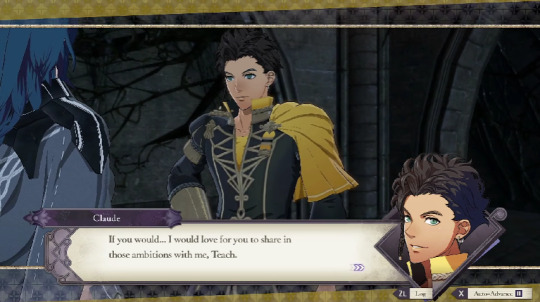
Claude: When I first saw you wield the Sword of the Creator, I wanted to use your power to my advantage. I wanted to use you to make my dream of a new world come true. But before long, I realized what I really wanted was to see that new world…with you by my side. I still feel that way, you know. I always will. That's why I have to leave.
Claude was taking advantage of female Byleth's romantic interest in him to achieve his dream. He admitted as much himself in his S-Support. That explained why his Goddess Tower scene was all about his political ambitions and lacked any genuine romantic undertones. Supposedly he fell in love with her somewhere along the way. But something felt off to me. He couldn't even attend Byleth's coronation?
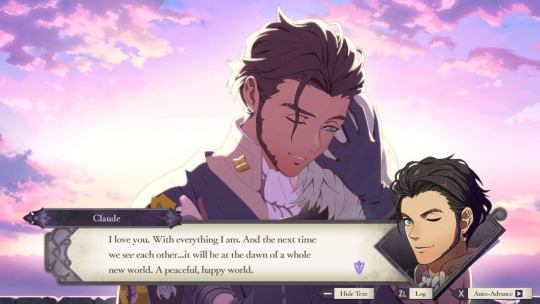
Byleth & Claude After ascending the throne as the first leader of the United Kingdom of Fódlan, Byleth sought to rebuild the war-torn towns and villages and to help guide the reformation of the Church of Seiros. After a few months of peace, remnants of the Imperial army joined with those who slither in the dark and marched upon the capital city of Derdriu. The new kingdom lacked the power to repel the invaders, but when defeat seemed imminent, a battle cry rang out from the east. Claude, the newly-crowned King of Almyra, led a mighty army that broke through the rebel forces with ease. This show of solidarity forever altered the course of history, heralding a new age of unity.
If he is paired with Petra, he postpones his return to Almyra for years due to his love. With Lysithea, his love for her compels him to give up the throne entirely. Even when he does return to Byleth like he promised, it's to defeat the remnants of the Imperial army and TWSITD. That earns him the title "King of Unification". But there's nothing in their paired ending to indicate a marital union.
Claude did care about Byleth as more than just a tool. But to me, it felt like the writers were trying to portray that he didn't love her romantically, albeit in a very subtle way. Which I actually found to be a very great idea. He definitely had a reason to marry Byleth for political purposes, considering his dream. And I liked that his reputation as a schemer finally amounted to something in the end after all. Besides, he had more chemistry with Hilda, anyway.
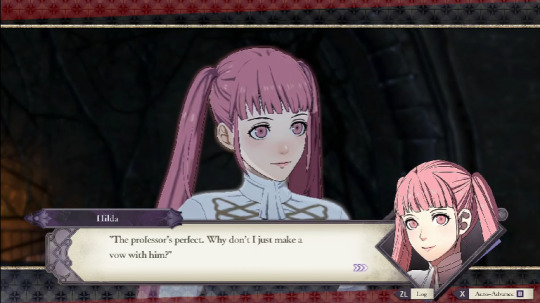
Hilda: It's just a legend, sure…but I prefer to be cautious about such things. One of the guys was pretty handsome, and he came from a good family… But that doesn't really tell you what a person's like on the inside. I want a life partner who's good-hearted and good-looking.
Claude is a very flirty person in general and has a lot of chemistry with most of the girls he can Support with. But he was particularly flirty with Hilda. Even their C-Support was surprisingly sexual. But their connection gradually developed into more than just physical attraction. The tagline for the game was, "Sweet memories twisted by time's cruel hand". Claude has many sweet memories of his childhood and Hilda is the only one who takes an interest in them.
Because of this, she was the only girl he offered to bring home. Claude is usually a very guarded young man who keeps his secrets close to his chest. He was afraid of his Almyran heritage being exposed because he's been the constant victim of racism. While Hilda made the occasional off-hand racist remark (moreso out of ignorance than malice), Claude still offered to introduce her to his family, showing his trust in her character and her ability to be judge people for who they are on the inside, not their heritage.
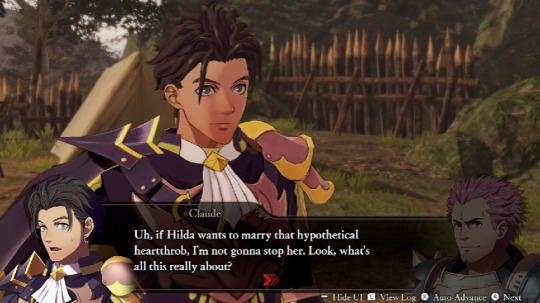
Holst: But what if the next king of Almyra turns out to be a kind and decent man? What if Hilda even likes him? Claude: Uh, if Hilda wants to marry that hypothetical heartthrob, I'm not gonna stop her. Look, what's all this really about? Holst: Apologies. My imagination ran free for a moment. If that is what Hilda wants, then I will not stand in her way either. Claude: Your imagination's definitely still running there. Holst: I'm just as worried about Hilda's future as I am about Leicester's—maybe even more so. Claude: I completely understand, so let me just say this… I believe that both Leicester's and Hilda's futures are as bright as they can be. All I ask is that you trust me.
Claude and Hilda don't need Byelth to choose the Golden Deer house to get married. Golden Wildfire proves that. Holst approves of their relationship. His A-Support with Claude even foreshadowed the Claude/Hilda paired ending. So, it definitely feels like it's the one Claude ship that's most rooted in "canon".
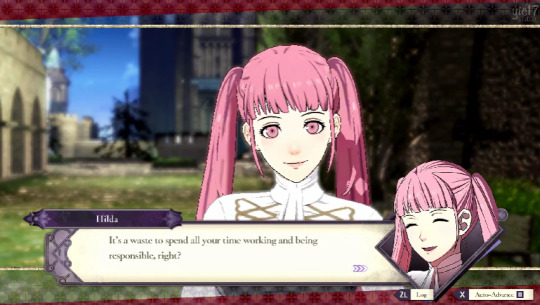
Hilda: I don't understand why anyone would want to risk their life for someone else. When you die, no matter how you died, it's over. To me, it's more important to enjoy life. We only live once, after all. It's a waste to spend all your time working and being responsible, right?
Hilda was the only character I did not recruit on my AM New Game+. If I had to guess, I'd say she was probably not even gonna be recruitable outside her home route, similar to Dedue and Hubert. I left her behind because I didn't want Claude to be alone. But also because she truly belonged on that bridge in Derdriu defending him. It's the ultimate fulfillment of her character arc, showing how she's changed from a spoiled and lazy girl into a mature woman who will try her best to not let down the people she cares about.
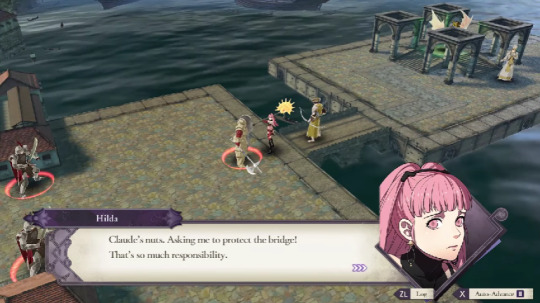
Hilda and Claude were the only lord and retainer I felt comfortable shipping because their differing social status had practically no effect on how they related to each other. Hilda could see through his fake smile because she was just as manipulative, constantly flirting to get people to do things for her. In CF, she died for Claude because she had fun with him and found him sexy, not because it was her duty as a Crest bearer. Claude expected her to run, but she stood her ground.
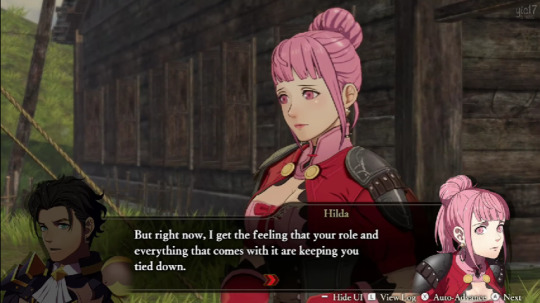
As a lord, Claude was in the middle. He was ambitious like Edelgard but not quite as ruthless. He shared Dimitri's distaste for war, but would compromise those ideals in pursuit of his goals. What I liked about Hilda as a retainer was that she supported him emotionally, but she also challenged him on his decisions when it was necessary. She questioned whether being king was really what he wanted when he was a natural free spirit at heart.
Claude: You and I may not hold any grudges, but if you look to our history, you'll see it was the Kingdom who tossed us to the wolves first. When our people were fighting for independence from the Empire, Faerghus attacked and conquered Leicester for themselves.
Claude certainly had good intentions, but in the end, he was perhaps a bit too motivated by self-interest. In VW, he realized that, which is why he stepped down in favor of Byleth. In GW, there is a chapter called "The End of the Alliance". Claude becomes king of the Federation and allies with Edelgard. He announces his intention to eliminate the church and invade the Kingdom using historical disputes as a justification, however questionable that may be.
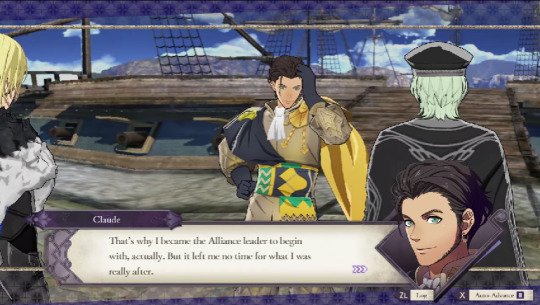
Claude: If you're going to lead Fódlan, then the Alliance lords will follow you. Back in the day, the Alliance split off from the Kingdom. I'm just putting us back together again.
In AM, there is a cutscene called "The End of the Alliance". Claude puts aside all historical animosity and willingly unifies with the Kingdom. Why the change of heart? He admitted he wouldn't do anything unless he had something to gain, but Byleth and Dimitri selflessly came to his rescue. And because of that, he gives his Hero's Relic to Dimitri, something he did not to for Edelgard. Symbolically this gesture is so important because he always thought he needed the power of the relics to realize his dream. But he doesn't.

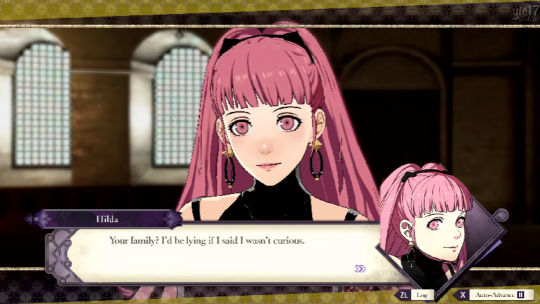
Claude & Hilda Trusting the affairs to his comrades with whom he had fought, Claude departed for his homeland. While in Fódlan he was no more than a noble, upon returning to his homeland of Almyra, he was a prince of the realm. Having grown strong and mature, he gained recognition among the royal family and eventually wielded influence in national politics. Several years later, the king of Almyra retired, and Claude succeeded to the throne. Simultaneously, a queen was introduced – none other than Hilda. Leveraging her brother's support, she unexpectedly demonstrated diplomatic prowess, contributing to the establishment of diplomatic relations between Almyra and Fódlan. Furthermore, with two consecutive queens from Fódlan, the values of Almyra began to evolve.
In AM, Claude's fate doesn't change much compared to VW. He still goes back to Almyra, presumably with Hilda if she wasn't recruited. So, I don't even think their VW paired ending would be any different in the AM timeline. And their marital union is what will help Claude achieve his dream. He didn't need Byleth, the Hero's Relics, or to become supreme leader. Marrying Hilda opens Fódlan's Locket. This is the only ending where Hilda gets involved in politics instead of making accessories, but it is better for her character development, and I think she'd be happier that way in the end.
38 notes
·
View notes
Text
Don’t just follow trends—create them with the power of our graphic course in Andheri at Reliance Animation Academy in Andheri

Reliance Animation Academy in Andheri is more than a training center—it's a launchpad for your creative career. If you're part of Gen Z and looking for a career that matches your passion, creativity, and need for independence, animation is calling you. And right here in Mumbai, our animation course in Andheri is tailored to make your dreams a career reality.
In today’s content-driven world, visual storytelling is everything. From Instagram reels to Netflix originals, from gaming to digital advertising—animation is at the core of what people watch, share, and remember. It's no longer a niche; it's a necessity. And at Reliance Animation Academy, we don’t just teach software—we build creators.
The Animation Boom: Why Gen Z Is Fueling the Future
Gen Z doesn’t want the cubicle life. You want to create, design, innovate, and be recognized for your ideas. Animation is the perfect career path for that. It combines the best of art and technology, offering endless opportunities across industries:
Entertainment (films, OTT shows, short-form content)
Gaming (console, mobile, AR/VR)
Advertising and branding
Education and e-learning
Corporate storytelling
The industry is growing globally and in India. With streaming services like Netflix, Amazon Prime, and Disney+ doubling down on animated content, and gaming taking over as the highest-grossing entertainment segment, animation is one of the most future-proof careers available today.
And guess what? You don’t need to be a pro-doodler to get started. All you need is a passion for stories and visuals.
Why Reliance Animation Academy in Andheri Is the Ideal Place to Begin
Reliance Animation Academy is part of the respected Reliance Education Group. That means we're backed by a name that stands for excellence, innovation, and industry relevance. But it’s not just about the name—it’s about how we empower students.
1. Creative Culture, Real-World Training
We understand Gen Z thrives in flexible, expressive environments. Our Andheri campus is designed to reflect that vibe. Think open labs, group projects, creativity hubs, and brainstorming zones. No rigid classrooms. Just an ecosystem where you feel seen and supported.
2. Curriculum That Matches Industry Demand
We constantly update our curriculum to match what’s trending in the job market. Whether it’s 2D, 3D, VFX, gaming, or motion graphics, our course content is approved and designed by real working professionals.
Want to work on films? You’ll learn cinematic storytelling.
Dream of being in gaming? We teach modeling, rigging, and animation workflows used in Unity and Unreal.
Interested in freelancing? You’ll build a portfolio that gets clients.
You also have the option to specialize further in niche fields like:
VFX Course in Andheri
Graphic Course in Andheri
BSc Degree in Animation in Andheri
3. Professional Mentorship, Not Just Lectures
Each batch is mentored by experienced industry professionals—VFX artists, 3D modelers, storyboard designers, and game developers. You’ll get real feedback on your work, guidance on career moves, and insights into how the industry works behind the scenes.
4. Software That Studios Use
We train you on software that’s used by top animation and VFX studios:
Autodesk Maya
Blender
Adobe After Effects
Adobe Premiere Pro
ZBrush
Adobe Photoshop and Illustrator
These aren’t just taught as tools—you use them in live projects and collaborative exercises, just like in a real studio.
Animation Careers Are More Diverse Than You Think
Here’s what your future could look like after completing our animation course in Andheri:
2D/3D Animator: Create moving characters and environments for games and media.
Storyboarding Artist: Visualize scenes and direct visual storytelling.
Motion Graphic Designer: Create ads, trailers, and explainer videos for brands.
Game Designer: Bring interactivity and life to games.
Character Designer: Build unique and memorable characters from scratch.
Compositor/VFX Artist: Add special effects to live-action or animated footage.
Freelance Content Creator: Design YouTube intros, Instagram reels, Twitch overlays, and more.
These careers are not limited by geography or industry. You can work with:
Film studios (domestic and international)
Animation production houses
Advertising agencies
Gaming companies
EdTech and e-learning startups
Content creators and YouTubers
Gen Z Perks: Work-Life Balance + Creative Freedom
Reliance Animation Academy understands that today’s students want more than just a job. You want lifestyle alignment. Here’s what animation gives you:
Remote Opportunities: Many animation jobs are fully remote.
Freelancing Freedom: Pick your clients, work on your schedule.
Global Exposure: Work with clients from the US, Canada, Europe, or UAE.
Creative Control: Build your own animation brand, channel, or studio.
Diverse Roles: From game cutscenes to animated music videos, choose your creative path.
Animation isn’t just a skill—it’s a passport to a flexible, fulfilling career that evolves with your goals.
Placement Support That Actually Works
We don't just say "100% placement support" because it sounds good. At Reliance Animation Academy, we put that into action:
Demo reel building workshops
Resume writing support
Portfolio presentation mentoring
Mock interviews
Studio collaborations
Our placement team has connections with top recruiters in Mumbai, Pune, Bangalore, and beyond. Whether you want a job, an internship, or a freelance opportunity, we make sure you are seen and selected.
Why Choose Andheri? The Creative Hub of Mumbai
Choosing Reliance Animation Academy in Andheri isn’t just about convenience. Andheri is Mumbai's creative heart. Here’s why that matters:
Proximity to Film City and Major Studios
Networking opportunities with artists, filmmakers, and designers
Access to media and art events, festivals, screenings, and masterclasses
By studying in Andheri, you’re not isolated from the industry—you’re placed right in the middle of it.
How to Enroll in the Animation Course in Andheri
We’ve made the admission process simple and straightforward:
Step 1: Call or WhatsApp Contact us at: +91 9326591557, 7400400795, 9920678816 for free counseling
Step 2: Visit the Academy Address: Unit no 14, 2nd Floor, Shri Alankar CHS Ltd, Nadco Shopping Centre, SV Road, Near Railway Station, Andheri, Mumbai
Step 3: Explore Our Courses Online Visit the course pages to know more:
Animation Course in Andheri
VFX Course in Andheri
Graphic Course in Andheri
BSc Degree in Animation in Andheri
Step 4: Submit Your Admission Form & Join Start your creative career with a course that prioritizes YOU.
Final Words: This Isn’t Just a Course – It’s Your Creative Future
Animation is not just another job option. It’s a lifestyle, a way of expressing yourself, and a global opportunity. And there is no better place to begin than Reliance Animation Academy in Andheri.
Whether you’re straight out of school or in college and looking for your "true path," our animation course in Andheri can unlock doors you never knew existed.
So Gen Z creators, this is your sign. Break the rules. Build new worlds. Design characters. Create emotions. And let your animation career start here.Ready to Animate Your Future? Call Now: +91 9326591557, 7400400795, 9920678816 Visit Us: Unit no 14, 2nd Floor, Shri Alankar CHS Ltd, Nadco Shopping Centre, SV Road, Near Railway Station, Andheri, Mumbai Website: https://relianceacademyandheri.com/
2 notes
·
View notes
Text
The Keepers 013

Hello, Keeper #0054. Welcome to your first assignment. Jeon Jungkook is the son of the wealthiest arms dealer in South Korea, and your job is to ensure his safety at all costs except one, he cannot know of your existence. In fact, nobody can know of our Society's existence. We have rules we must follow and a timeline to protect. Do your job and do it well... we're counting on you.
────────────────
Chapter Select My Masterlist Questions?
────────────────
warnings: none
────────────────
Chapter 013
Present day…
The rest of our stay at the motel was just as painful as it had been every other day we were there. The atmosphere between Jungkook and I continued to be awkward, though improved slightly after he reminisced on my previous life. Our previous life. I can’t get the image of a naked Jungkook underneath me. He didn’t go into great detail about what exactly happened on that lake, but I got the hint. These very hands have touched places on him I can only fantasize about. The more I learn about Y/N, the more I envy her. I was right in my prediction that there was no way she didn't return his feelings. I can still feel the remains of her underneath my skin, clawing to touch him once again. I need to shove her as far down as I possibly can. Her yearning will be of no use to my mission, she'll only impair my judgement and I cannot afford any more mistakes.
Twelve returned to the motel Saturday morning, letting herself in to Jungkook and I's room without even knocking. She dragged Jimin and Seokjin in as well.
"The rest of us devised a plan on how to proceed." She starts. "Yoongi is offering his family's summer home as a place to lay low for now. It's remote enough where we don't think Taehyung or any Cobras would think look there. However, it is a Min property that Taehyung has knowledge of, so it's best not to stay there too long." Twelve stands with her arms crossed over her chest, feet shoulder width apart. She truly is the perfect example of a honed soldier. Broad stiff shoulders, menacing glare, direct voice that demands obedience. I can see where Jungkook gets it all from, he looks much more like his mother than his father. Even their speech patterns are similar.
"What about the resistance?" I ask. It's been weighing heavily on my mind ever since the other Keepers revealed the CHS's true goals. My skin constantly feels dirty knowing I was a pawn in their sick capitalistic game of protecting the rich. They've taken everything from me, my life, my memories, my autonomy. I'm itching to see the entire society burn to the ground, and a secret part of me hopes I get to be the one to throw the flame.
Another part of me just wants to find some unity in the other Keepers. They're truly the only people in the world who can understand what I'm going through. Yes, my mission and main priority is Jungkook, but a devilish part of me wants to ditch him and focus on tearing down the CHS. I don't feel any obligation to prove myself to the Honors anymore, I just want their heads on a stick. I don't need their praise, I need their blood on my hands. My obligation to protect Jungkook only seems to be an obstacle in the way of that.
"Ten and I need more time developing a strategic way to proceed." Twelve responds. "We need more recruits. Right now, we are severely outnumbered. The best we can do is encourage other Keepers to stop taking the infusion, help them learn the truth, and hope they'd like to fight alongside us against the Honors. Now that Mr. Jeon is gone, I can focus all my energy in helping other Keepers wake up."
"So then what am I supposed to do?" I can't just go back to my normal Keeper duties now that I know the truth. I refuse to spend another second of my life following their commands.
"Your job." She stares at me, almost like she's daring me to defy her. "The best thing you, or any other Keeper in the know, can do to help the resistance, is to not fuck it up. Act like everything is normal, don't give the Honors a reason to be alarmed."
"I can't just go on acting like a Keeper when I know-" She cuts me off by raising her hand, a motion of silence.
"As far as they know, you don't know a thing." She reemphasizes. "What's more important right now is getting our stories straight for when the Honors question you tonight."
My shoulders tense. "What?" I knew the Honors would've had to check in eventually, but why tonight?
"It's the end of the week." She reminds me. How could I have forgotten? We're supposed to report back to the hub tonight. Fuck. My hand hangs back in dread. This is the literally the worst thing that could happen right now. "They'll want a detailed explanation on the death of Thirty-Nine. We need to be sure they don't find out that you exposed yourself prior to her death." She hesitates before saying her next words. "I also want you to report my death as well. If I report Mr. Jeon dead, the Honors will have me go back to HQ and give me a new assignment. I've toyed with the idea of letting them think Mr. Jeon is still alive, but it's too risky. My lie would be exposed the moment we're called to the hub. A substitute would have to take my place and there's no way to hide his death from another Keeper. It's much cleaner if they believed I died alongside him." She walks closer to me, staring me in the face. "This means that you'll have to be the one to report all the deaths that happened this past week."
She can't be serious. Me, alone in a room with the Honors, lying my ass off. "Why me?"
"Because you were the only other Keeper there besides Taehyung's new one, and I have a feeling the new Keeper saw me jump in front of Jungkook to save him."
"Yes, but I jumped out too." I remind her. If Twelve were to get in trouble for exposure, then I would too. We both rushed at the same time to save Jungkook.
"It's more likely the new Keeper noticed me over you." She states. "You stayed relatively close to the car, I jumped into the open right on top of him. We have to bank on the hope that nobody noticed you crawl out from hiding, it's the only way any of this plan works."
"Ok but what if I was spotted, and the Honors know of my exposure?" I don't love this plan. It's riding too much on uncertainty. If I've been reported for exposure prior to my meeting with the Honors, then I'm likely never walking out of that meeting. I'll be put into solitary confinement. I'll be injected with the infusion once again, and who's to say they'll let me keep all my new memories I've gained. I can't start over from square one. I'll never see daylight, at least not for a long while. I won't get the silky caresses of the wind on my skin, never feel the crunch of the grass under my boots. Worst of all, I wouldn't get to see Jungkook again, ever. He'd be erased from my memories, just like he was the first time. The thought makes me sick to my stomach. I swallow down the saliva building in the back of my mouth.
"If you don't return in forty-eight hours, I'll go looking for you." Twelve says confidently, like that's supposed to comfort me. I scoff at the idea.
"I'd be in solitary confinement there'd be no way you could get to me."
Twelve shakes her head. "We have our ways." She says, ominously. "We've gotten people out of confinement before, we can do it again."
Breaking out of solitary confinement is unheard of. If what she says is true, that it is possible to break out of it, then maybe the Honors aren't as strong as I originally thought. To me, they're this all knowing, untouchable, godlike, overseers. Maybe that's just all the brainwashing talking. It brings me an odd sense of comfort that the Honors have been deceived before and can be again. A small sliver of hope swells in my chest, maybe do have a chance of breaking free from the CHS once and for all.
"If you don't come back, I'll go and get you myself." Jungkook butts in from the corner. He's been standing off to the side, along with the two other boys, patiently listening to Twelve and I ramble on about her questionable plan. I roll my eyes.
"I appreciate that, but there's no way you'd make it out of the House of Honors alive." I state.
"I'm just saying," he looks down at his fingers, he's fiddling with a bullet casing in between his fingers "if you don't come back then I'm going to find you."
────────────────
Hello Keeper, #0054,
Congratulations on another week of successfully protecting subject #0468. At this time, you are to return to your hub for 24 hours for rest and regeneration. Within the hour, a replacement Keeper will arrive at your location to take over your position in your absence. Do not leave your assignment until the substitute arrives. Do not stay at your hub longer than authorized. Keep up the great work, Keeper. Signed,
The Chronological Honor Society
────────────────
I got the message to return to the hub shortly after Twelve and I moved the boys to the Min summer home. The summer house was exactly what I'd imagine a rich family's summer home would look like. It was big and cold, the still air made it obvious nobody had been there for quite a while. Regardless of its vacancy, it was well kept and clean. It felt more like a museum, or a display house. The house was about an hour's drive out of Seoul, closer to the edge of the country where all the beaches and touristy summer attractions were.
Once getting the message to return to the hub, I hid outside, like I would if I was actually following the rules and trying to conceal myself. The substitute showed up about twenty minutes later. The boys were given strict instructions to not mention a single word about me, Twelve, or anything to do with the Keepers. The substitute will be watching them, and one wrong slip up could cause Twelve and I to be reported. Twelve left soon after dropping us off at the summer home. I don't know where she's off to or when she'll be back, but I hope to god she can pull more recruits in the meantime. This has to go well, I don't know what I'll do if it doesn't. I refuse to be a slave to the CHS for as long as I live, I want my own life. Not the life of a Keeper, and certainly not the life of Y/N. Maybe after all this, I can find a nice cottage to live in, one that's by a river and has flowers planted all around. I'm so sick of the city, so sick of violence and guns. I want a life where I can wander barefoot in the grass and feel the air on my skin whenever I please. No constricting uniforms or masks that cover my face. No heavy belts strapped with an endless number of weapons and tools. Maybe Yoongi would let me live in his summer home for a while, just until I can find a job and be on my feet.
I arrive at the hub to find only one Keeper there, but it's not anybody I recognize. Twelve is in hiding and Thirty Nine is dead. Where is Ten and Hoseok? The new Keeper sits formally on one of the beds. His posture straight, eyes forward, and his hands rested gently on his thighs. This must be Taehyung's new Keeper, Thiry Nine's replacement.
I make my way over to my usual bed and sit, mimicking the other Keeper's mannerisms. I have to act like I'm still taking the infusion, robotic and purposeful.
"You must be Kim Taehyung's new Keeper." I say, breaking the tension. The Keeper's head turns towards me. On my first day, Twelve introduced herself to me, so I figured I wouldn't be too abnormal to introduce myself as well.
The Keeper doesn't say anything. He just nods in confirmation, then goes back to staring in front of him. Ok then, so much for small talk...
I jolt in my seat when the door to the hub suddenly swings open. I brace myself for Ten or Hoseok's entrance, but I'm taken aback when the person at the other side of the doors turns out to be neither of them.
It's the Head Grieve, accompanied by two bodyguards behind her. The pit in my stomach sinks lower than it ever was before. She's in her usual all white get-up, looking as plastic and ominous as ever. I focus on steadying my heartrate. If I was still on the infusion, I wouldn't be feeling any fear at all. If I was following the rules, I'd have nothing to worry about. I have to keep up the charade that nothing is wrong. Everything is fine, I've done my job effectively and by the book.
"Hello again, Fifty-Four." The Head Grieve greets with a strained smile. "We've heard you've had an eventful week. Mind if we go over a few details with you?" There is something slightly different about her though, I can't quite put my finger on it. I notice her hair has a few fly aways sticking out from her neatly pinned bun. The red blood vessels in her eyes tell me she might be stressed about something. Or maybe it's anger? Fear? I don't know, nothing else about her gives away her true intentions.
"Of course." I respond. "I'm assuming this has something to do with the deaths of Twelve and Thirty Nine?" I say it casually, like I assume they're already informed Twelve is dead. My statement results in the reaction I was expecting.
"Twelve is dead?" The Head Grieve asks. For a moment, I see an actual expression from that botoxed face of hers.
"Yes, ma'am." I say. "Had you not been informed?"
"We weren't sure." She says. "Since she is- or was- one of our best, we assumed she survived the shooting." She then pans over to the other Keeper in the room, gesturing to him with her hand. "This is number Fifty Three, Kim Taehyung's new Keeper."
Fifty Three? He was assigned to the Keepers right before me. Seokjin's words from earlier this week ring in my head. This Keeper, sitting only a few feet away from me, could very well be my brother. Seokjin said that my father made a deal to have all his kids recruited if anything ever happened. That fact that his badge number is only one less than mine means we had to be recruited at the same time or very close together. This Keeper might Yejun, but I can't worry about this right now. If this is Yejun, then he doesn't know that, and neither should I. This is an issue to worry about later.
"Yes. We met briefly before you came in." I say.
"Good." She moves further into the room, choosing to sit on one of the beds, facing both me and the other Keeper. "We've asked the other Keepers to arrive to the hub a day late so the three of us could have a little chat." She pulls up her tablet, the one I've never seen her without. She taps a few things on there as she talks. "We wanted to get your retelling of Thirty Nine's, and now apparently, Ten's death."
Ok, just breath...
────────────────
Jungkook
It's been fourteen hours since Y/N left. Yes, I am counting. My entire body itches knowing she's somewhere I can't get to her. After seven years, I had hoped and prayed to every god I could think of. I prayed to be able to touch her again, to hear her laugh, to smell her. Literally anything, any fragment of her I could still have. I don't even believe in god or miracles, but maybe I do now. It's not every day the love of your life comes back from the dead, but suddenly there she was, standing right in front of me with that same scowl I remember.
I've been using these last fourteen hours to think about Y/N's argument she made earlier this week, in the motel. I hate to admit it, but she has a point. She's not the Y/N I remember. The Y/N I remember was naive and careless. She was the type to run into oncoming traffic purely out of spite. Repercussions be damned, if she had a point to prove there was no stopping her. We used to hang out by this tree in the woods, it was big enough that Seokjin Hyung hung a swing on it when we were boys. I told Y/N once that she was too small to be able to climb it. Later that night, I got a frantic call from her pleading with me to come and get her down. That was who she was. There was no telling her no, and nobody dared tell her she was wrong. Though, she usually was never wrong. Y/N was one of the smartest people I knew. She always was top of her class and had a plethora of random facts to spill at any given moment. I loved that about her. I loved everything about her, and I still do. Her naivety, her stubbornness, her eagerness and persistence.
This Y/N is different. Not so entirely different that she's unrecognizable, but different. She's still just as stubborn. She still twitches her lip when she's annoyed or frustrated. She still smells the same, and she still fiddles with her thumbs in the same way. What's different about her is her posture. I would have never recognized her if she didn't take her mask off, her entire body is so different. This Y/N's shoulders are never relaxed. Her eyes scan every room we walk into, like she's drinking in the whole scene and wouldn't dare miss a single detail. She's much more tone and broad. This Y/N isn't the slightest bit naive or careless, in fact, she probably knows a lot more about what's going on than I do. This Y/N is older. This Y/N is a soldier, not the daughter of a wealthy businessman. Though, when I search her eyes for fragments of the Y/N I remember, my Y/N, she's still in there. I see her when she bites her lip in deep thought. She's in the sound of her sighs, she always sighs deep and on the same pitch every time. Y/N is alive, even if she herself keeps claiming she's not. I see her, even if she can't.
I'm not disappointed by the difference. Heck, after seven years, even I'm not the same person I once was. I guess the difference feels heavy because she's not the image I had of her in my head. I don't necessarily think that's a bad thing, it's just a heavy thing to carry. It's a persistent reminder that time has passed, and she's had seven whole years without me. Seven years of no memory of me, or herself. The difference between eighteen-year-old Y/N and twenty-five-year-old Y/N weighs on me. It pierces my skin, and I feel like I'm bleeding from the inside out. I'm reliving the grieving process all over again, but this time it's so much more complicated because she's right in front of me, not dead, just different. Well, she's usually right in front of me. Right now, I'm lying on one of the guest beds at the summer home. I can't sleep, not when Y/N isn't here.
I know it's selfish, but I refuse to let her go again. If she doesn't want to be with me, that's fine, I can live with that, but I will not be leaving her alone anymore. Last time she left me, she married the son of a murderous tyrant, then lost her life because of it. I am not repeating my previous mistakes. I'll follow her anywhere, play any role that she wants me to play. Boyfriend, friend, assignment, I don't care.
I can't help but laugh at myself in this moment. Out of everything that's happened this week, the only thing I ever find myself thinking about is her. Maybe that isn't a good thing. Namjoon Hyung's death still feels like a fever dream. I keep waiting for him to call me, only for my phone to remain agonizingly silent. Being back at Yoongi Hyung's summer home is digging up feelings I don't think I'm ready to explore yet. The room I'm currently in use to be Namjoon Hyung's designated room when we stayed her. What hurts even more is the fact Taehyung Hyung was the one who killed him. I don't understand it, the Taehyung I remember would've killed for us. He's dead to me too, so I add him to the long list of people I'm crying over tonight.
My father is less of a loss. I'm more so mourning the loss of a protentional reconciliation. He never really saw me as a son, only a possible heir to the company. I knew he never really loved me the way a father should, but that never stopped me from trying to prove myself. Honestly, I feel mostly relief he's gone. That relief is promptly followed by extreme guilt. What kind of son feels relieved his father is dead?
My mother is a whole 'nother story. I don't even know how to begin to unpack that. I was told my whole life that she was dead. I mourned her, learned to live without a mother figure in my life. Of course, I thought about her often. I always wondered what kind of mother she would be if she were here. Would she be cruel and money hungry like my father? Or would she be as a mother should? Loving, attentive, kind? For some reason, I'm mad at her. I'm mad that she was here the whole time, let me live a whole life without her, and never made herself known to me. I know that isn't her fault, but I'm mad at her for it anyways. I don't even know if I want a relationship with her. I've lived my entire life without her, why would I need her now? All I want is to take Y/N and drive away. I don't care where, I should have taken her away the first time, before she died and chaos ensued.
I repeat the same words over and over again in my head.
I will not repeat my past mistakes. I will not repeat my past mistakes. I will not repeat my past mistakes.
They bring little comfort, but I must keep reminding myself. Y/N will not die again, not with me around.
I will not repeat my past mistakes.
I'm forced out of my thoughts by my phone dinging. I pick it up from the nightstand.
Yoongi: Twelve has cleared the area of the summer house. She's also checked in with the Cobras to see what their plans are. They're planning on raiding your father's warehouse, like we thought they would. They don't seem to have any suspicions of your whereabouts just yet, so right now you're in the clear. Just lay low for a bit. 2:35 am
JK: Any word on Y/N? 2:36 am Yoongi: None yet. 2:38 am JK: ok. 2:38 am
I'm still mad at him for trying to kill us, though I can't really blame him. My plan blew up just like he said it would. If Y/N wasn't here, we'd all be dead. I know he's only protecting us because of Y/N. If she wasn't around, he definitely would have left us to fend for ourselves. He's probably just as scared to lose her again as I am.
I spend the rest of the night replaying every moment I've had with her in my head. I don't even want to think of the possibility of her not returning.
────────────────
#bts fanfiction#bts ff#bts#fanfiction#the keepers#jungkook#jungkook fanfic#jungkook x oc#jungkookff#jungkook x reader#jungkook fluff#jungkook x you#jungkook angst
5 notes
·
View notes
Text
Religion is a Social and Psychological Necessity
We thrive in structured communities that offer rituals, traditions, and shared experiences.
These provide predictability in an unpredictable world, helping us orient our lives.
Without formal religion, people end up crafting their own “quasi-religions” (sports fandoms, political movements, even personal wellness routines).
Examples:
Sports fans have rituals, feast days (game nights), chants (songs), and revered figures (players/coaches).
Activist groups create moral frameworks, martyrs, sacred texts (manifestos), and evangelism (awareness campaigns).
Even pop culture fandoms develop symbols, holidays (Star Wars Day), and deep emotional connections.
All of these function in a religious way because they fulfill the same human needs.
The Danger of Religion Becoming an Idol
Religion can become its own idol, where the institution becomes more important than the mission.
This happens when people care more about preserving doctrines, traditions, or control than about love and unity.
Ironically, this means a religion designed to unite can end up dividing, especially when people defend their version of the truth over fostering real connection.
Jesus addressed this directly:
"The Sabbath was made for man, not man for the Sabbath." (Mark 2:27)
Meaning: Religious traditions exist to serve human flourishing—not the other way around.
The Need for Growth, Progress, and Love Over Preservation
A healthy religion evolves, breathes, and remains open to new insights rather than just preserving what was.
This doesn't mean abandoning core truths, but understanding their purpose in a changing world.
Christianity itself grew from a small Jewish sect into a global movement, showing that growth and adaptation are part of religious life.
Erring on the side of love:
When a rule, doctrine, or tradition becomes a burden rather than a blessing, it needs to be re-evaluated.
Love and unity should always take precedence over rigid institutional preservation.
Religion’s Role in Life’s Biggest Moments
Religion isn’t just about belief; it’s about how we mark the most important transitions in life:
Baptisms: New life and community welcome
Weddings: Celebrating love as a sacred bond
Funerals: Mourning with meaning and hope
No secular alternative fully replaces the depth of tradition, music, community, and storytelling that religious ceremonies provide.
Religion as a Living Story
Religion, at its best, is a shared narrative that brings people together, helping them understand their place in the universe, their relationship with others, and their purpose in life. When it becomes too rigid, it loses its heart. When it errs on the side of love, unity, and growth, it becomes the most powerful force for human meaning and connection.
5 notes
·
View notes
Text
Twilight Monk launches in March - Gematsu

2.5D Metroidvania action RPG Twilight Monk will launch for Switch and PC via Steam in March for 2,200 yen, publisher Gravity Game Arise and developer Aquatic Moon announced. It will support English, Japanese, Korean, Traditional Chinese, Simplified Chinese, French Italian, German, Spanish, Brazilian Portuguese, and Russian language options. A demo is available now for PC until March 3 as part of Steam Next Fest: February 2025 Edition.
Here is an overview of the game, via its Steam page:
About
Set in a hand-drawn world, this 2.5D action RPG blends Metroidvania exploration, RPG elements, and a sprawling overworld map. With dungeon hubs, narrative depth, and level-up mechanics, it offers freedom and classic adventure in a richly crafted fantasy setting.
Story
The land of Speria is shrouded in darkness, with monsters ravaging villages. Survivors gather at Crescent Isle’s monastery, seeking hope from the Moonken Monks. Raziel Tenza, a Twilight Monk descendant, must stop the traitor Nox and restore peace, as internal conflicts threaten even the monks’ unity.
Key Features
Satisfy Your Desire for Adventure as You Dive Into Intricate Dungeons – Each dungeon holds secrets and areas you can’t access initially. Gaining new skills unlocks hidden treasures, scrolls, secret passages, and puzzles, adding depth to your adventure.
Experience the Nostalgia of Classic JRPGs Through the Overworld Map and Towns! – While traversing the overhead world map connecting the dungeons, you’ll frequently encounter enemy monsters. When a battle breaks out, you’ll be teleported to a battle arena tailored to the surrounding terrain, offering combat experiences similar to those found during dungeon exploration. Be sure to explore every nook and cranny of the towns scattered across the world map to fully immerse yourself in the classic JRPG experience!
Become the Wielder of the “Phantom Pillar” – This mysterious artifact infused with ancient power, can be used for platforming, battle, blocking enemy attacks, or even to activate mechanisms and solve puzzles.
An Original World Brought to Life Through Hand-Drawn 2D Illustrations – Set in a hand-drawn world, this 2.5D action RPG blends Metroidvania exploration, RPG elements, and a sprawling overworld map. With dungeon hubs, narrative depth, and level-up mechanics, it offers freedom and classic adventure in a richly crafted fantasy setting.
Watch a new trailer below.
Game Overview Trailer
English
youtube
Japanese
youtube
3 notes
·
View notes
Text
Giving my 2 cents on the Unity topic
As you may have noticed, I'm a Godot Engine developer, but I'm not here to point and laugh, nor do I want you to switch engines to Godot if you're a Unity developer.
I just want to point out the importance of projects like Godot, Blender and every other open source tool out there. Aside from game development, every other field in software development has as a standard that the main tools that you use are open source, why? Ownership, there will always be paid alternatives that will offer better user experiences out there, but having the open source tools be the standard this creates the need for the paid alternatives to be better.
Even if you don't use open source tools they're improving the paid ones by raising the bar on what other tools are expected to have. Godot doesn't need to be the best tool, with the best usability, or better graphics, it just needs to be there, improving over time, making sure that the paid tools don't get too comfortable on their positions on being a evil monopoly.
Support Open Source, even if the main Godot devs ever try to be funny silly evil🤡 your copy of Godot with your copy of the source code will still be yours. And trust me, even in open source this stuff happens, every now and then some company decides to close the code going forward and make so that you have to pay a license to get the updates, but they can't force you to get those updates, they can't force you into getting into their scheme retroactively. You will still have a choice.
51 notes
·
View notes